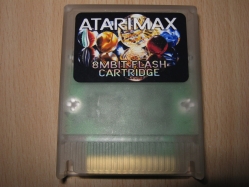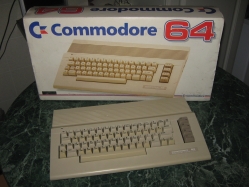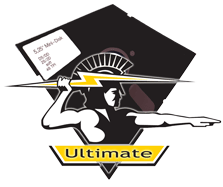Some new Games & Utility for Commodore VIC-20.
- Raw tape transfer 1.0. Tool to transfer files from tape to disk, including tape headers. Useful for analysing original games. Can transfer any memory region on an unexpanded vic.
- TGA – The Great Adventure. Conversion from the Commodore 64 of a classic Italian multiple-choice text RPG written by Alessandro Castellari in 1983. Try it on your VIC with the nice graphics of hi-res and multi-colour screens.
source: Denial (The Commodore VIC-20 forum)
iAN CooG Site has been update with a new version of the Generic C64 prg Unpacker v2.23 (Source included).
History:
v2.23 – 2010.06.12 – 2010.07.30
- Found a Time cruncher hack expecting registers set by JSR $FD15 ($31/$30/$ff), now it’s handled correctly in pass 1.
- In verbose mode, now also number of iterations and total cycles taken by the simulated CPU are printed, just to see which is the slowest&fastest unpacker.
- Raised max iterations to support VERY intensive unpackers like ALZ64, worst testcase I found needs 27097007 (0x019D77AF) iterations to finish unpacking. This cruncher isn’t really meant for crunching programs ranging from $0801 to $ff00 due to its slowness, but still has to be supported even when abused =) New max value is set to 0×02000000, should be more than enough for anything that actually reaches end of unpacking, and won’t cause too much delay with programs that can’t be really unpacked or with endless loops.
Read more…
 SD2IEC is a hardware mass storage device using an SD/MMC card and interfacing with the IEC bus. It is based on the ATmega644 microcontroller from the Atmel AVR microcontroller family.
SD2IEC is a hardware mass storage device using an SD/MMC card and interfacing with the IEC bus. It is based on the ATmega644 microcontroller from the Atmel AVR microcontroller family.
The most prominent use of SD2IEC is emulation/replacement of a Commodore-1541 disk drive for a C64. Hardware and the microcontroller’s firmware is available as open source (GPL).
Changelog:
2010-08-02 – release 0.9.3
- Bugfix: Extension hiding works again with names >12 characters.
- Bugfix: Increase data hold time during standard TALK.
- Testing aid: card detect-to-LED function.
source: sd2iec.de gitweb forum thread c64-wiki

Autopsy:
The Atarimax Maxflash Flash Cartridge System for Atari 8-bit Computers is a high quality, professionally produced cartridge creation suite for the Atari 400/800/XL/XE series computers.
Maxflash Studio Demostration:
source: atarimax.com
 Realms of Quest III is an RPG game for Commodore VIC20.
Realms of Quest III is an RPG game for Commodore VIC20.
Enter Realms of Quest III, the computer game that offers you the chance to assemble a party of six adventurers who undertake heroic acts in a vast world of deep dunjons to explore…
source: psytronik software
My SIO2SD interface is dead (without any valid reason) after 2-3 hours of playing demos/games.
I have tried to reprogramming the firmware with a STK500 USB ISP Programmer and the tools AVRDUDE and it has worked perfectly.
Fixed the SIO2SD Firmware Crash.
The SIO2SD is a device that allows you to load games/applications into any 8-bit Atari XL/XE computers via SIO interface from SD/MMC cards.

Autopsy:
Today i picked up a Commodore 64C in original box, it is in perfect condition with no damage at all including the Manual and original Powersupply.
source: wikipedia

CBM-Command is a disk manager for the Commodore 64 / Commodore 128 / Commodore VIC20 / Commodore C16 computers. It is written like Norton Commander or Midnight Commander, but is much simpler due to the target platforms. Both the C128/C64/VIC20/C16 have their own native version of the application.
Release Notes – 2010-07-27 – Version 1.6
New Features:
Changes:
- (All) Fixed major bug causing directory corruption when using the select all hot key to initiate file copy operations.
- (All) New progress bar that updates more frequently and is more meaningful to view.
Known Issues:
- Screen corruption when viewing a drive with no disk in it.
source: cbmcommand.codeplex.com
 C64-Archiv descriptions:
C64-Archiv descriptions:
- Scans and stores your C64 – (games) – collection with only a few clicks.
- Easily manages your C64-programs by creating your own categories and selections.
- Starts the C64-programs in different emulators.
- Delivers instructions for the emulators VICE, CCS64, HOXS64 and EMU64.
- Works with tools e.g. 64Copy, D64Lister or DirMaster.
- Stores the C64-programs from files with the extensions .D64, .D71, .P00, .PRG, .T64 and .CRT.
- Stores files by name with the extensions: .TAP, .VSF (VICE-snapshot-file) and .C64 (CCS64-session-file).
- Stores text and information files with the extensions: .TXT, .NFO and .DIZ
- Stores PDF files.
- Searches archiv files with the extensions: .ZIP, .7Z and .CAB
- GameBase frontend with the possibility to download games.
- GameBase view with up to 30 columns.
- Supports multi-language (currently: Englisch, French, Italian and German)
Version v3.2 – What’s new?
- NEW: PDF-files can be stored.
- NEW: Search window in the Gamebase list.
- NEW: Italian translation (Thanks to xAD/nIGHTFALL)
- NEW: The creation of profiles for tools was simplified.
- FIXED: Improved display of the filesizeBUG fixed: Search window not closed at exit.
- BUG fixed: Error with long filenames.
source: Mikes Pages
 Commodore Free Magazine Issue #42
Commodore Free Magazine Issue #42
In this issue you can find:
- Editorial.
- News.
- The Early Days of Online Genealogy.
- Interview With Björg Stojalowski.
- Interview With Ross Myers.
- A Quick Look At BasicEdit.
source: commodorefree.com
 from 1541 Ultimate homepage:
from 1541 Ultimate homepage:
- Last firmware version: 2.0RC5 is now downloadable from the download page.
- Ultimate-II sources released!
You can access them through http://svn2.xp-dev.com/svn/1541UltimateII/.
For those who know how to use SVN, you can do a checkout to create a local working copy by typing:
svn co http://svn2.xp-dev.com/svn/1541UltimateII/trunk
in an empty directory. I am working on a short manual, and on access to the tools needed to build the project. This time, the FPGA sources have been released as well. ;-)
source: 1541ultimate.net
 Cheril Perils is a new game from The Mojon Twins for ZX Spectrum.
Cheril Perils is a new game from The Mojon Twins for ZX Spectrum.
source: mojontwins.com

CBM-Command is a disk manager for the Commodore 64 / Commodore 128 / Commodore VIC20 / Commodore C16 computers. It is written like Norton Commander or Midnight Commander, but is much simpler due to the target platforms. Both the C128/C64/VIC20/C16 have their own native version of the application.
This version encompases many enhancements and improvements of existing functionality, as well as inclusion of new target platforms (VIC 20, Plus 4) and features (D81 support, Configuration Color Picker).
Release Notes – 2010-07-21 – Version 1.5
New Features:
- (ALL) New color picker for the configuration program.
- (64, 128, PLUS 4) 1581 Disk Image (D81) Support.
- Added support for Commodore Plus 4 computer.
- 32K Expanded VIC-20 now supported.
Changes:
- (ALL) Removed CTRL key from hot keys that previously required it. Hot keys the use the C= key still require it.
- (ALL) If you have 1 or more files selected (highlighted) and choose delete, all selected files will be deleted. If you do not have any files selected (highlighted) then only the file that the selector is pointing to will be deleted.
- (ALL) When you rename a file the textbox is pre-populated with the name of the old file.
- (VIC 20, Plus 4) Configuration files are enabled and working correctly.
- (ALL) Changed the UI for file transfers to use a new progress bar to give feedback on the copy operation.
- (64, 128, Plus 4) Changed the UI for disk image creation/writing to use a new progress bar to give feedback on the image operation.
- (VIC20) Refactored many of the screens to better fit the 22×23 layout.
- (VIC20) Filename shortening removed and the file type moved to the left of the directory display.
- (PLUS4) Created color scheme to match the environment.
- (VIC20) Panels are not displayed side by side, only one panel is displayed at a time.
- (VIC20) D64 support is removed, the RAM was needed elsewhere.
- (ALL) The screen has been made more scalable.
Known Issues:
source: cbmcommand.codeplex.com
 ASCII <–> PETSCII Converter for Windows (Requires .Net Framework 4).
ASCII <–> PETSCII Converter for Windows (Requires .Net Framework 4).
PETSCII (PET Standard Code of Information Interchange), also known as CBM ASCII, is the variation of the ASCII character set used in Commodore Business Machines (CBM)’s 8-bit home computers.
source: noname.c64.org









 Realms of Quest III is an RPG game for Commodore VIC20.
Realms of Quest III is an RPG game for Commodore VIC20.




































 C64-Archiv descriptions:
C64-Archiv descriptions:
 from 1541 Ultimate homepage:
from 1541 Ultimate homepage: Cheril Perils is a new game from
Cheril Perils is a new game from  ASCII <–>
ASCII <–> 


Recent Comments